Gallery Portrait
Capitain Petzel
Published on 6 JUN 2024
The story of Capitain Petzel begins in Cologne and New York as much as it does in Berlin, and it reads like a piece of recent art history. When Gisela Capitain met Martin Kippenberger in 1977, she moved in with the artist. Fascinated by the intensity of the artist’s life and work, Capitain immersed herself in West Berlin’s scene while keeping her day-job as a teacher—long before the city was considered cultural (or political) capital of Germany. Her engagement with contemporary art became an education in taste, arguably a significant characteristic in art dealers. Later, she would say, her main criterion for quality was artistic intelligence, which has to do with the way artists build their own world, she explains, weaving unspoken narratives into their works. The more multi-layered, the better.
When Kippenberger obtained a vast loft in Kreuzberg and started his now legendary office ”Büro” — a 1980s version of Andy Warhol’s Factory, sort of—Capitain managed the space. Her stint in Berlin lasted until she moved to Cologne in 1983. Although Capitain admits that she thought Cologne was ugly at first, she started her own gallery only a few years later, and it remains an important player in the West German and international market.
As if new galleries need established ones to grow out of—and they often do—Capitain’s assistant, Friedrich Petzel, eventually started his own gallery too. Petzel, who hails from Germany’s North and studied in Munich, established his business in New York in 1994, in SoHo, which would become one of the centers of the contemporary art world. Later, Petzel moved to Chelsea, then expanded to a town house on the Upper East Side.
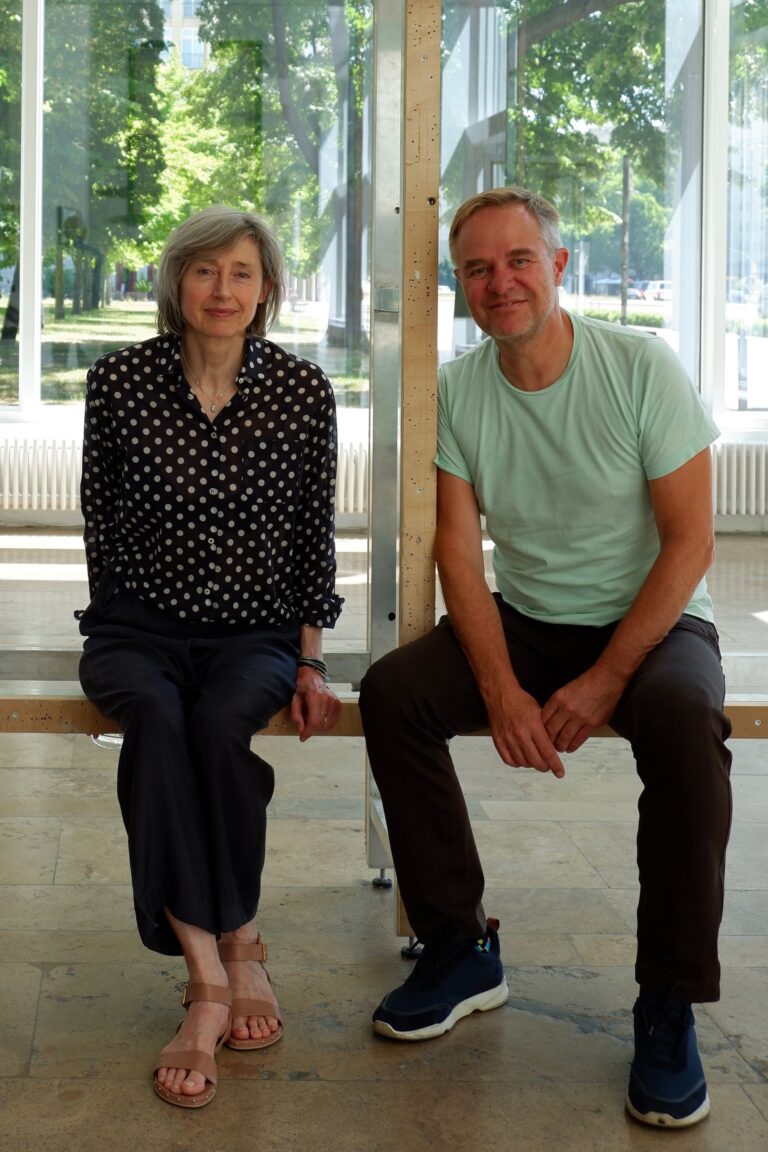
Gisela Capitain and Friedrich Petzel
Capitain and Petzel, now colleagues in two cities whose art scenes have a long-standing connection, remained friends, and in the 2008 they decided to open a space in Berlin. At the time, the city was just emerging as a cultural center out of the famously hedonistic 1990s. Young artists and curators founded institutions, as if they felt an urge to get serious. Since 2004, the city has its own biennial, and many dealers opened Berlin branches or started from scratch. They were ready to experiment, and the mythology around the German capital was powerful. Capitain and Petzel went their own way, however. Instead of creating a showroom or a project space, they decided to establish a third, independent gallery—Capitain Petzel was born.
The Italian architect Aldo Rossi once called Karl-Marx-Allee the last great road in Europe, and even in Berlin, a city known for its spaciousness, it feels especially generous. It used to be named after Stalin, the Soviet leader, and from the 1950s on, it served as the sumptuous thoroughfare to Alexanderplatz, the political and urban heart of the Socialist East. Capitain Petzel set up their space in this historically charged neighborhood, in a section of the boulevard which was designed in the 1960s, when GDR architecture loosened up and departed from the rigid classicism of earlier years. Instead, the structures recall what in the West would become known as International Style. Right angles, large windows, light construction, and simple, inviting volumes speak the modernist Esperanto of those years.
The new gallery moved into a 1964-built pavilion, which, post-reunification, had seen different uses like so many places in Berlin’s former East. And although its history does not reach far back, tracing it is difficult. The structure housed a night club in the 90s, some neighbors agree, while others have no memory of it—maybe because of their different perception of the city, as if different people populate urban space at night. Later, it housed a car dealership, which installed shiny metal covers for the ceiling. Otherwise, little is known about previous tenants.
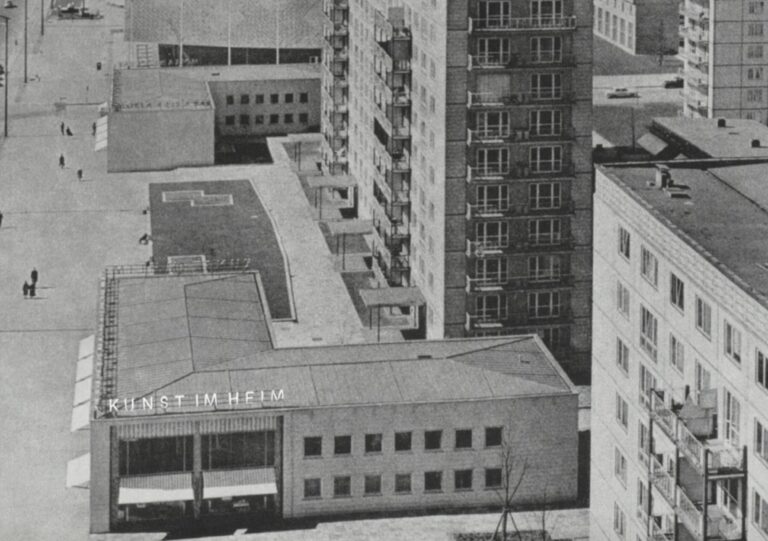
Kunst im Heim
View from 1960s
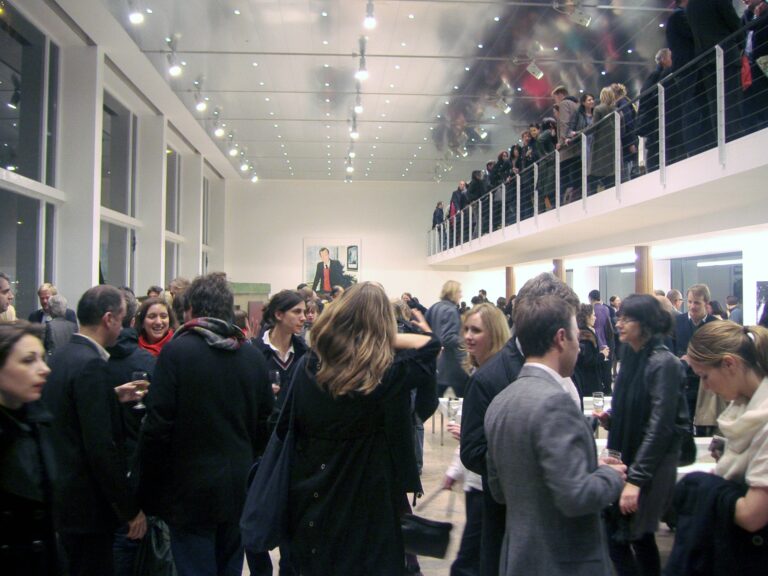
Opening Inaugural Exhibition Kunst im Heim Berlin
Capitain Petzel 2008
The gallery’s first exhibition, a group show, was titled Kunst im Heim, referring to the original use of the building—in Socialist times, it figured as showcase for crafts and home design. The tall windows looking out to the four-lane boulevard with its ample sidewalks, invite natural light. The main room features a balcony and spans two levels, while the back wing of the L-shaped building is tucked away from view and has space for offices and storage. On the 13th floor of an adjacent building, overlooking Alexanderplatz and its vast open spaces, a dance school is used for the gallery’s opening parties, and recently, Plan B, a gallery that just moved into the neighborhood, joined the celebrations.
The gallerists from Cologne and New York come to every exhibition opening. They maintain a close connection, but at the same time, the Berlin space is an independent gallery. Artists like the painter Charline von Heyl or Stephen Prina are represented by Capitain and by Petzel, and are also part of the Berlin program—there is some overlap. But the Berlin gallery is distinct from the others, and each member of the young team contribute their own perspective. The program is constantly evolving, too. Take the artist Leyla Yenirce, who only recently graduated, but already has a substantial history of shows. Her presentation at Capitain Petzel in 2023 was very painterly, but her practice is at home in video and sound. It makes sense that the large-scale works make images and styles clash like a montage in avant-garde cinema.
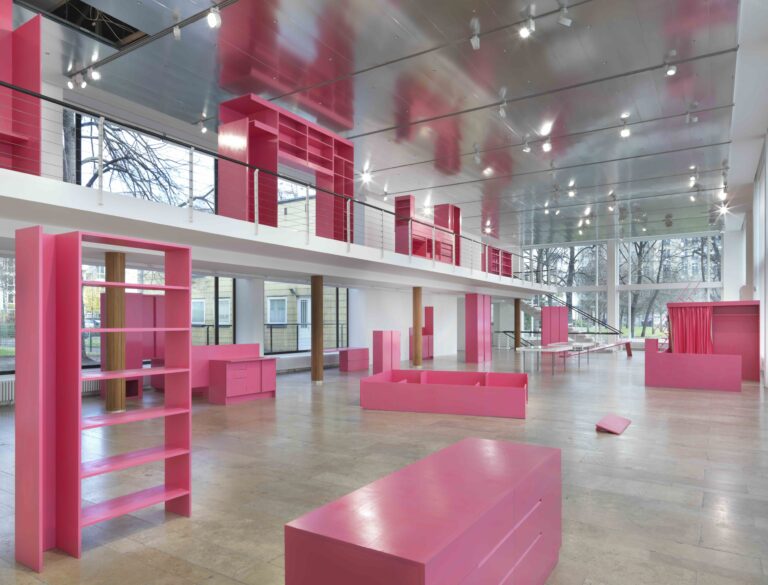
Installation View
Stephen Prina As He Remembered It
Capitain Petzel 2018
The heritage-protected, dual aspect structure poses many challenges to exhibition-making. For Yenirce’s show, the front windows were blocked, so the ample showroom resembled a large corridor. The gallery uses a modular system of walls that can be placed without drilling a hole anywhere and whose dimensions are variable. If the need arises, large objects can be suspended from the ceilings, such as Stefanie Heinze‘s very large-scale paintings in a show in 2022. They hovered just a little over the polished stone floor. In the run-up to her pavilion at the Venice Biennale, Yael Bartana screened a selection of her video work in the basement, which lends itself to projections, almost like a little secluded cinema. The building proves to be surprisingly adaptable.
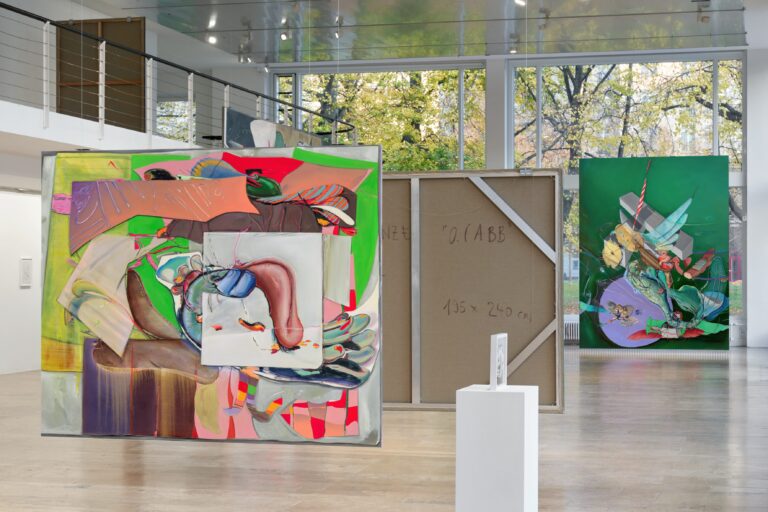
Installation View
Stefanie Heinze Dimensions of the Fool
Capitain Petzel 2022
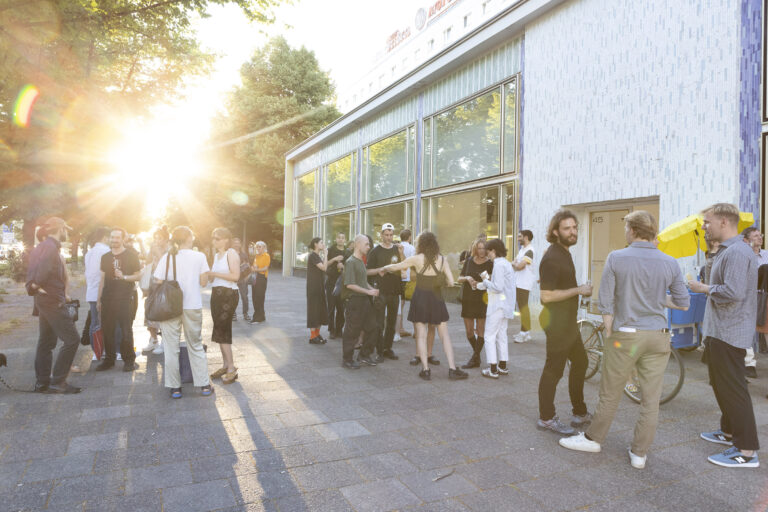
Opening Reception the state I am in
Capitain Petzel 2022
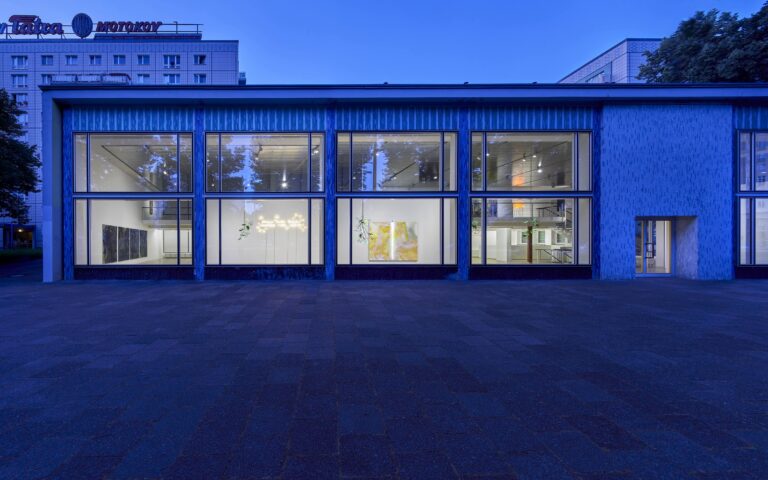
Installation View
Andrea-Bowers and Mary Weatherford Drink the Wild Air
Capitain Petzel 2023
Which, taking into account the different media in which the gallery’s artists work, is a good thing, and Capitain Petzel’s group shows attest to that. An upcoming exhibition features 18 artists, among them Sarah Morris with a new canvas, historical positions like Maria Lassnig, and Austin Martin White, who makes painterly mixed media pieces and is another recent addition to the roster. The show is called Sweet Sixteen, named for the 16th anniversary of the gallery, and referring to a celebration of, if not exactly adulthood, but a step out of youth—an age full of potential.
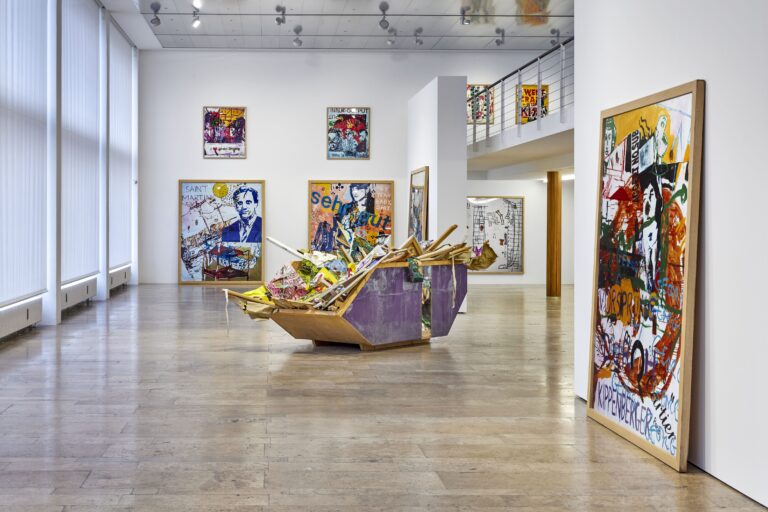
Installation View
Martin Kippenberger Heavy Burschi
Capitain Petzel 2023
Capitain Petzel
Karl-Marx-Allee 45
10178 Berlin
